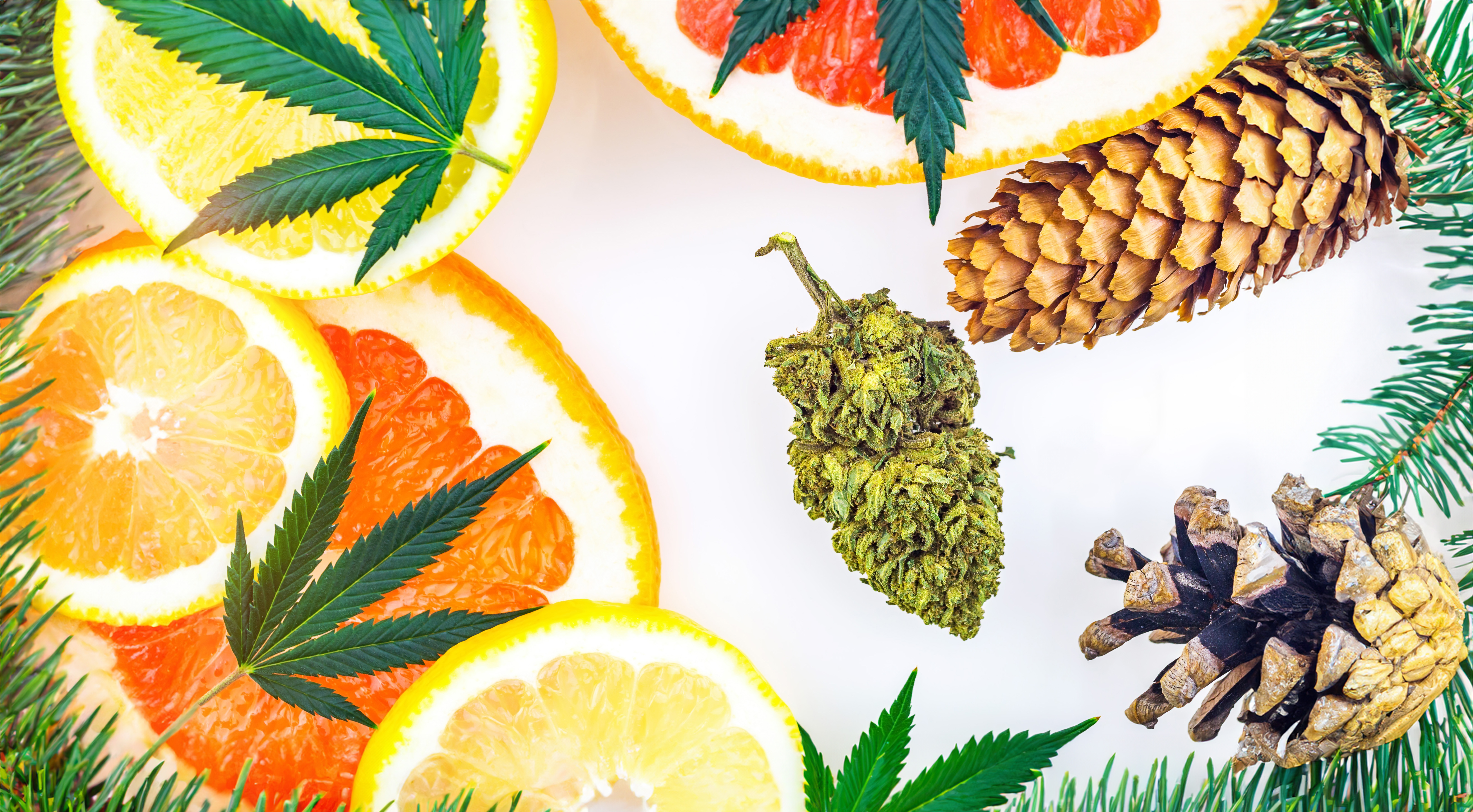When you catch a whiff of cannabis, whether it’s a tangy hint of citrus, a deep earthy aroma, or a sweet floral scent, what you’re actually smelling are terpenes. These aromatic compounds are not just responsible for the vast palette of fragrances and flavors in cannabis but also influence its effects. Understanding terpenes can seriously upgrade your cannabis experience, from choosing the right strain to knowing how it might affect you.
All About Terpenes in Cannabis
What Are Terpenes?
Terpenes are aromatic oils secreted in the same glands that produce cannabinoids like THC and CBD. They are not unique to cannabis and are found in many plants, herbs, and fruits. Each terpene contributes a unique scent and can also affect how you feel when you consume them.
In the wild, these compounds serve practical purposes for plants, such as repelling herbivores or attracting pollinators. For humans, they have found a place in traditional herbal remedies for millennia. In cannabis, terpenes are believed to influence the effects of THC (the psychoactive component of cannabis) and other cannabinoids through something known as the “entourage effect.” This theory suggests that terpenes work synergistically with cannabinoids to modulate the overall psychoactive effects and therapeutic benefits.
Common Terpenes and Their Effects
There are over 100 different terpenes in cannabis, but let’s talk about a few of the most common ones:
- Myrcene – Typically found in abundance in most strains, myrcene has a musky, earthy aroma with hints of tropical fruit. It’s said to promote relaxation and is prevalent in indica strains, which are often associated with sedative effects.
- Limonene – True to its name, limonene has a citrusy smell and is also found in fruit rinds and peppermint. It’s believed to uplift the mood and provide stress relief. Limonene can also increase the absorption of other terpenes and chemicals through the skin, digestive tract, and mucous membranes.
- Pinene – Found in pine needles, rosemary, basil, and parsley, pinene is known for its sharp, sweet pine scent. It may help counteract some of the cognitive effects of THC, like memory deficits, and has been used traditionally to reduce inflammation and bronchitis.
- Linalool – With a floral, lavender scent, linalool is favored for its calming effects and is said to boost the immune system and reduce inflammation. It’s also thought to moderate the anxiety-inducing effects of THC.
- Caryophyllene – This terpene, which has a peppery, spicy aroma, can also act as a cannabinoid by binding directly to CB2 receptors in the body and is associated with reducing inflammation and pain relief.
How Terpenes Influence Your High
The entourage effect of terpenes and cannabinoids can influence the therapeutic effects and high of cannabis. For example, a strain rich in both THC and myrcene is likely to produce a more sedative high compared to a strain that has the same THC level but is dominant in limonene, which might result in a more upbeat high.
This synergy means that if you’re consuming cannabis for specific therapeutic effects—like anxiety relief or insomnia—you might want to choose a strain with a terpene profile that can help achieve those effects.
Why Terpenes Matter in THC Consumption
When it comes to consuming THC, knowing your terpenes can greatly enhance your control over the effects. Since terpenes can alter how cannabinoids interact with the body, they play a crucial role in the intensity and duration of the high. For instance, terpenes like pinene and limonene can help mitigate some of the potential unwanted effects of THC, such as anxiety or short-term memory impairment.
Moreover, because terpenes have their own medicinal benefits, their presence in cannabis can enhance the plant’s overall therapeutic effects. This makes selecting a strain with a complementary terpene profile to the cannabinoids important for both recreational and medicinal users.
Choosing the Right Cannabis Product
Whether you’re selecting dried flower, oils, or edibles, consider the terpene profiles often listed in lab results or product descriptions. These profiles can give you insight into the flavor and potential effects of the product. For a more immersive experience, some users opt for products where terpenes have been reintroduced after extraction, enhancing both flavor and efficacy.
In essence, terpenes do much more than make cannabis smell good—they tailor your high, influence therapeutic effects, and ensure your cannabis experience is as unique as you are. Next time you pick up a new strain, take a moment to ask about its terpene profile and discover just how much these tiny aromatic compounds can do!

